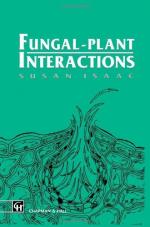|
This section contains 645 words (approx. 3 pages at 300 words per page) |

|
Insect-plant interaction refers to the activities of two types of organisms: insects that seek out and utilize plants for food, shelter, and/or egg-laying sites, and the plants that provide those resources. These interactions are often examined from the plant's perspective, and a principal broad research question is: "How do the activities of the insect affect plant growth and development?"
The interactions can be beneficial to both the plant and the insect, as illustrated by pollination. During pollination, an insect moving within a flower to obtain nectar may transfer pollen either within that flower or among other flowers on that plant. Other relationships between insects and plants can be detrimental to the plant but beneficial to the insect (e.g., herbivory, or feeding upon the plant). Plant-feeding insect species are numerous, constituting more than one-quarter of all macroscopic organisms. Although most plant parts are fed upon...
|
This section contains 645 words (approx. 3 pages at 300 words per page) |

|


